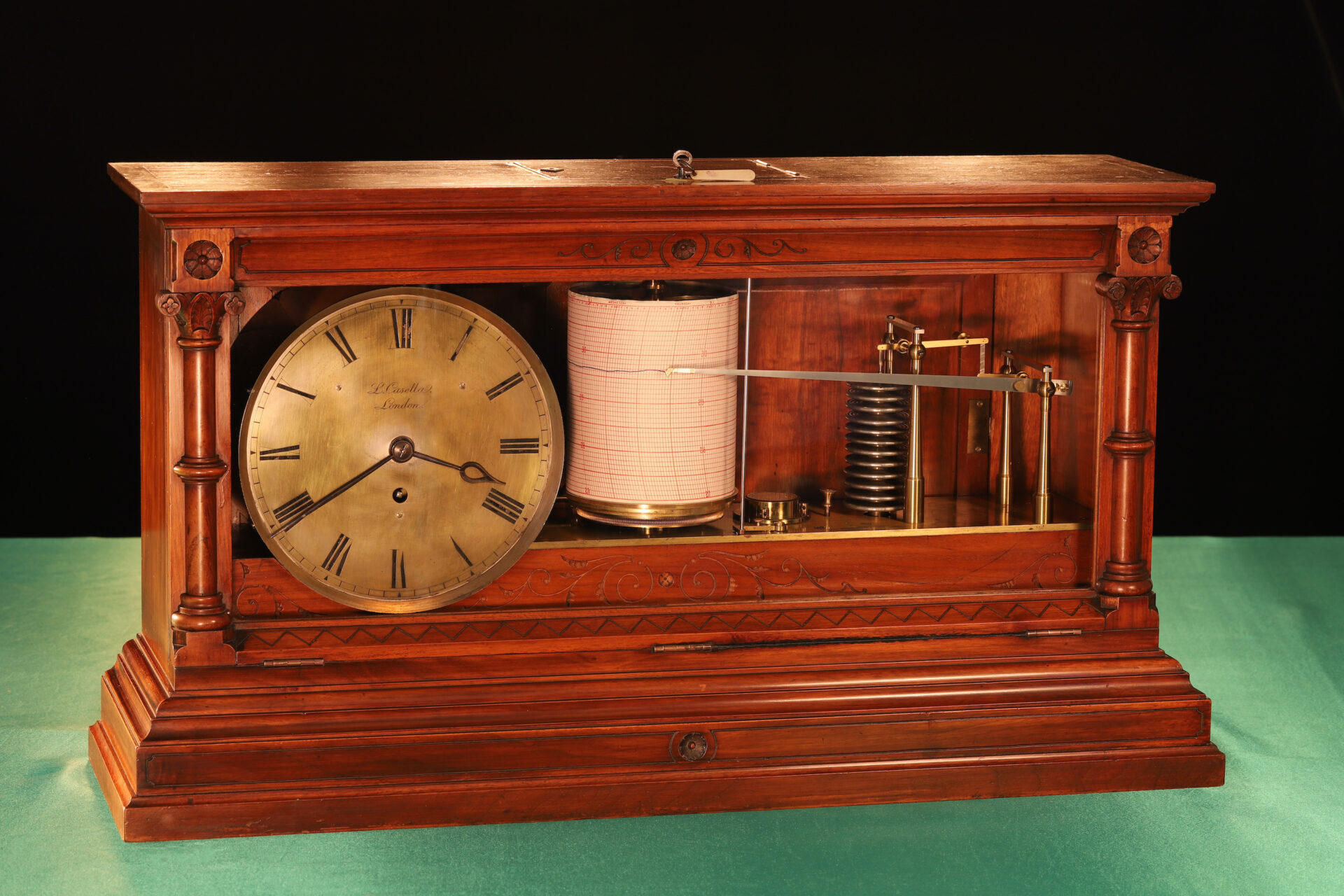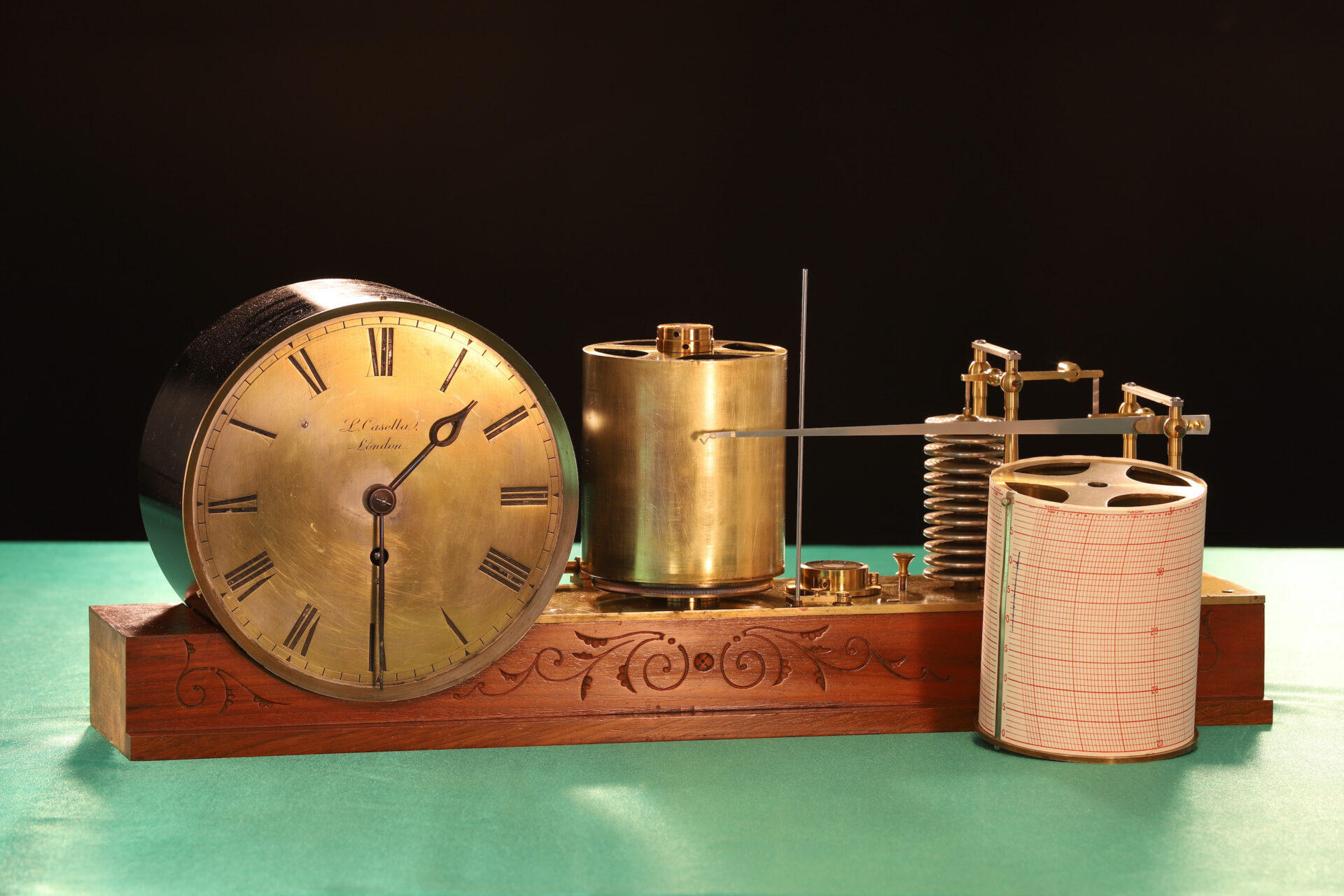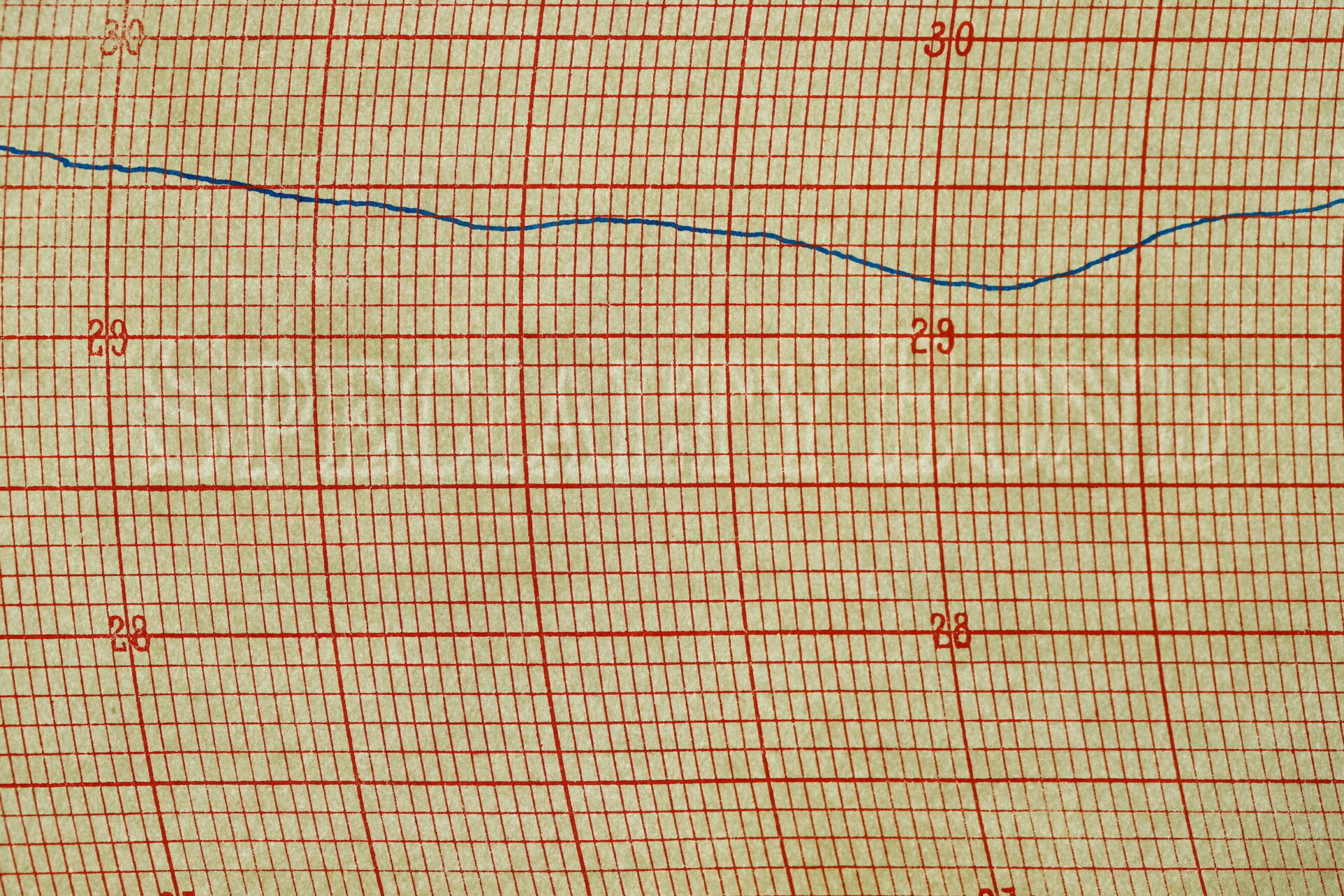Antique weather station having eight day fusee clock with deadbeat escapement, assembled between substantial plates with heavy turned pillars, 8” silvered dial with roman chapter ring and winding square, charcoal blued steel hands. Circular japanned dust shield. Drum output shaft, the clock drive with basic universal joint, fine helical gear drum drive and end float adjustment.
The barograph constructed mainly in lacquered brass and comprising twelve 2” diameter pressure sensing cells, driving conventional layout counterbalanced amplification levers with drop link. The cross shafts supported on finely balanced pivots with adjustment flats. Recording range from 27 – 31 inches of mercury. Grained and lacquered hardened aluminium recording arm describing a 10” arc. All raised on four turned pillars with steel cross beams over a massive chassis fitted with arrestor assembly, circular spirit level, and pen adjustment capstan. Signed by the maker “Richard Frères, Constructeurs Brevetes, Paris” with “RF” logogram. Dual concentric recording drums, the outer paper carrier 4½” diameter x 5¼” high with spoked construction, paper spring clip, fine height adjustment wheel. The inner driving drum set to the chassis with heavy axis spindle and end float adjustment, the base circumference with finely cut helical gear.
The whole contained within a well-engineered mahogany cabinet, the drop down bottom-hinged glazed front bordered by Ionic columns and decorated with floral and scroll motives, secured on a lock with snap spring closure. The top with locking access door affording removal and re-fitting of paper carrier. The back with twin panelled locking doors to clock and barograph movements.
Complete with original recording paper printing block, and at least 100 original papers watermarked “Specialty Bond,” considered to be contemporary.
Condition: The subject of a complete mechanical overhaul. The clock dial with traces of original silvering, the hands with some losses, the movement clean and running well. The barograph chassis with some losses and ink staining, the movement retaining much original lacquered finish, working well with very acceptable levels of accuracy and sensitivity. The recording arm and nib replaced as original pattern. The mahogany case with good colour and structural integrity, the locks working and with correct keys. Instrument access door with some damage to edges.
This instrument presents in very crisp original condition. Re-silvering of the clock dial was considered, however in most cases this does not blend well with the overall patina and might appear incongruous.
Comments: One of the most interesting instruments I have had the pleasure to examine, this is a very unusual variation of the weather station. To date, one other of similar basic layout has been examined, though that dates to the 1930s, retailed by Hamilton & Inches on a Short & Mason Registered Design.
This instrument could be a one-off commission or possibly a show piece. Most probably assembled by Casella at the time they became the formal UK agent for Richard Frères. The barograph is particularly interesting both in terms of its substantial construction and mechanical specification, twelve-cell pressure sensing modules being very unusual, especially from this period. In addition, this is the first instrument of this type yet examined or seen with a recording range as low as 27”Hg, the standard being 28” Hg.
Interestingly, the barograph is not numbered – almost all examples from this manufacturer are, the number generally struck into the chassis adjacent to the maker’s logo. The absence of a serial number might suggest a pre-production model or indeed a one-off. Additionally Richard Frères, certainly in later instruments, standardised on squares at the head of the cross shaft pivots, for adjustment with a fine spanner, whereas this instrument has flats more akin to a butterfly wing. The papers are watermarked “Specialty Bond”, and these are a noticeably lighter weight than might generally be found. The provision of what must be a contemporary or original printing block would further support the unique nature of this instrument. Two further indications of the quality and special nature of this instrument are found by the provision of a spirit level mounted to the centre of the chassis, and vertical micro adjustment of the paper carrier, enabling the paper to be offered to the nib at precisely the right height, enabling compensation for the variations in printed papers along with positioning of the paper on the carrier. Both these are extremely unusual features, evidence of a high precision instrument.
Mechanically, this is clearly much different to the acknowledged weather station pattern, and dating this instrument would place it right at the very beginning of the emergence of these instruments. It is the most logical and certainly the most practical design addressing all the known flaws found in the standard or later pattern. That may be because the standard pattern had yet to be constructed and made available, but equally the designer or end user may well have insisted on this design, requiring an instrument with greatest attainable accuracy.
These are fascinating instruments, and this one is of great importance in the design and evolution of meteorological instruments.
NB: Some of these photographs were taken during the process of reassembly and there are necessarily missing screws.
Dimensions: 29” wide x 16” high x 8⅝” deep
Stock No: BG1812
Price: Vavasseur Archive - not currently for sale



